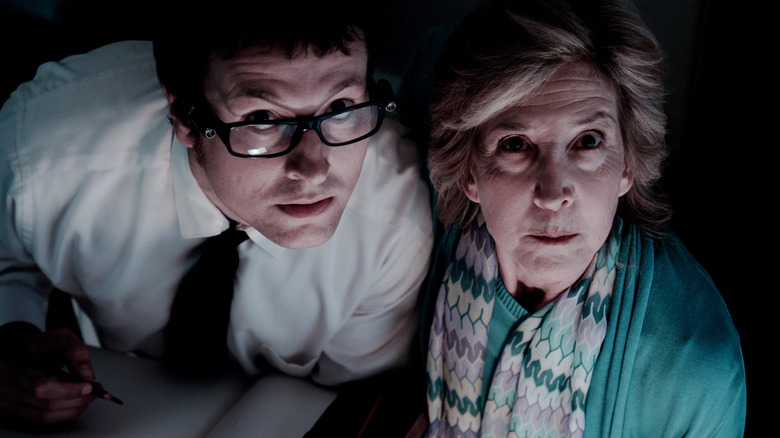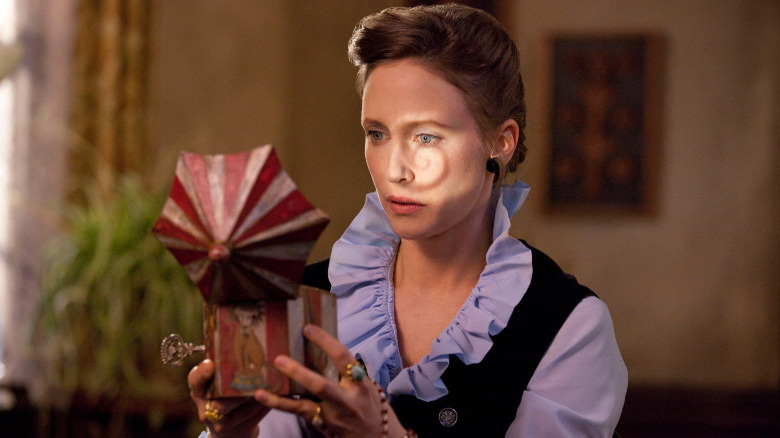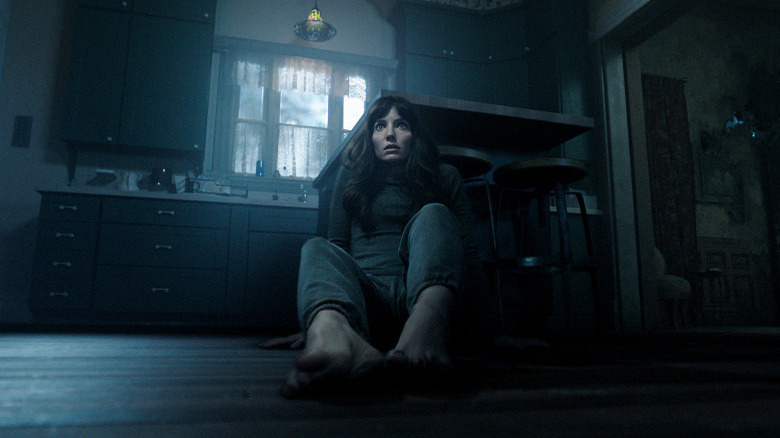The Simple Idea At The Heart Of James Wan's Horror
For all the success he's enjoyed helming big-budget action and superhero movies, the Malaysia-born, Australia-raised filmmaker James Wan remains a horror aficionado at heart. "You can take the boy out of horror, but you can never take the horror out the boy," as he once put it, explaining why his "Aquaman" sequel, "Aquaman and the Lost Kingdom," is "very heavily inspired" by Italian director Mario Bava's 1965 sci-fi horror film "Planet of the Vampires." Yet, for as much as he obviously loves the genre and its many flavors, it's a little harder to pin down how, exactly, one would define "horror" in Wan's work.
As Wan sees it, some of the scariest elements of his horror films are also the easiest to grasp when it comes to what makes them scary. Here's what he told Hear Us Scream in November 2021:
"I think part of the reason, what I tapped into with my sort of ghostly supernatural films is that the simplest thing, like a door creaking open, and it's not like you are sleeping at night and then you close it to open it up."
Indeed, most of Wan's horror movies begin in a place of simplicity. Two strangers awaken in a room with no idea how they got there in "Saw." A married couple receive an anonymous gift in "Dead Silence." A family moves into a new house that their dog refuses to enter in "The Conjuring." The audience is already on-edge by this point, having sat through either spooky opening credits and/or a creepy prologue. But the films' characters? They've only just begun to realize something is amiss (if even that), and it's the idea of being in their shoes that's truly upsetting.
What lies beneath
It's only after he establishes a film's basic premise that Wan starts to take things in a far wilder direction. In "Saw," the two leads discover they've been kidnapped by a sadistic killer who wants to "test' just how far they will go to ensure their own survival. In "Insidious," an already disturbing scenario (a child abruptly falls into a coma) becomes a living nightmare when it turns out he's actually trapped in an other-worldly realm of demons and specters. And "The Conjuring"? If you think a single haunted house is bad enough to deal with, try an entire universe of haunted objects and places.
Similarly, one of Wan's favorite tropes is to have the characters in his films learn that their pasts are not what they believed. In the cases of "Dead Silence," "Insidious," and "Malignant," the movies' protagonists are forced to grapple with dark secrets related to their childhoods as they set out to uncover what, exactly, is happening to them and their loved ones in the present-day. On top of being a powerful metaphor for people dealing with the effects of repressed trauma from when they were younger, this motif is an extension of a larger idea that defines so much of Wan's horror output — that if you go looking below the surface of a problem in your life, you often end up having to deal with an issue that's far bigger and more terrible than the one you started with.
'Everyday things' make it scarier to Wan
If anything, the more unremarkable a situation or item seems on the surface, the scarier it often ends up being in Wan's horror movies. To quote the filmmaker:
"I've made objects like a doll or whatever come alive, and that's why I'm very much drawn to the [haunted] house sub-genre because it allows me to [build] a strong foundation to play with all those. Leans on ideas. And, um, I don't know. I think it's the more mundane things. The everyday things that make it scarier for me."
This very much holds true across Wan's horror films. The Billy ventriloquist doll in "Dead Silence" and Annabelle in "The Conjuring" are quite eerie to behold, but what really makes them alarming is their everyday surroundings and the way the people around them act like they're merely ordinary toys. (That's not to encourage anyone to casually judge things by their outside appearance, but I'm willing to make an exception when it comes to clearly-wicked dolls.) Likewise, "Malignant" finds the grown-up version of its protagonist living with an abusive partner. It's a horrible but, sadly, all-too-real scenario which somehow becomes worse when it takes a turn for the bizarre and outlandish.
Can Wan effectively carry his horror methods over into "Aquaman and the Lost Kingdom," a film that takes place in a fantastical universe where words like "mundane" and "everyday" really don't apply? I'll be excited to see him try when the movie hits theaters on March 17, 2023.


